Laxmangarh in Rajasthan || An interesting stop between Indian capital Delhi & Bikaner with a lot of historical attractions to explore
When we started from Noida towards Bikaner at 4:30 in the morning after having a cup of tea each and some rusks, we were really excited for the journey. We had planned to cover several points on our way and the first of those stops was a little town known as Laxmangarh, which, as per Google, had a fort worth visiting. At about 11:30am, we were turning into the town that is right on the highway.
Related Blogpost - City of Lakes, Udaipur - One of the most popular tourist destinations in Rajasthan and top places to explore in the city
Right at the turn, toward the left, we saw a beautiful and well-maintained green area with a clean waterbody at the center. There were several waterbirds resting on the shore and flying about. It looked like a little slice of heaven in a landscape that was turning drier by the minute. This was a biodiversity park and we decided that we would visit it on our way out of Laxmangarh, and so we proceeded toward the fort.
Laxmangarh is a small town about 300kms from Delhi and about 200 kms from Bikaner. It lies in the Sikar District of Rajasthan. Laxmangarh was founded by Rao Raja Laxman Singh of Sikar in 1805. The fort too was built by him.
Since we were fairly early in the day, or because it wasn't the full tourist season yet, or may be because Laxmangarh isn't really a major tourist attraction, there was only local crowd around and we found a very convenient spot to park our car. It was right next to an abandoned looking haveli, and about 100 meters from the fort itself. Locals pointed us toward the fort - there was no signage visible anywhere.
Related Blogpost - Vedi Temple inside KumbalGarh Fort, Rajasthan - 3 Storey Octagonal structure standing strong on 36 pillars around world's second largest wall
Related Blogpost - Great example of Rajput Architecture & Ruins of Rana Kumbha Palace inside unique UNESCO World Heritage site and India's largest fort in Chittorgarh, Rajasthan
The fort appeared small when compared to other forts, but looked interesting. So we started the climb. There were just a few people sitting on a khaat near the entrance playing cards. Apart from that it looked fairly human-free.
Related Blogpost - Kumbhalgarh Fort of Royal Rajasthan - A grand example of Indian defence Architecture within the second Longest Wall in the world
Upon reaching the end of the ramp, we came across a Balaji (Hanuman) temple on the right and a big board that stated that the entry to the temple is permitted, but the fort is a private property and the standard "trespassers will be prosecuted" notice. We noticed that all the gates to the fort, except the one leading to the temple, were locked.
Related Blogpost - Tour de Churu Streets having grand havelis with marvelous fresco paintings | Haveli Heritage Tour Rajasthan, India
We saw the pujari ji at the temple and after offering prayers we asked him about the fort. He told us that a businessman from Delhi has bought the fort and his family often visits and stays inside the fort. This sounded really incredible. Imagine buying an entire fort and making a home inside, in today's day and age. Yes, of course, some royal families still continue to inhabit their forts and palaces. But if you haven't inherited a royal structure, you need to have a lot of ambition (and of course money) to be able to do what this businessman from Delhi had done. And why Laxmangarh? Because we weren't able to see the fort from inside, I cannot answer this.
Related Blogpost - Badal Mahal in Rajasthan - A brilliant palace inside Kumbalgarh Fort for Panoramic Views of the mountains surrounding second largest wall of the world
So our much anticipated visit to the Laxmangarh Fort ended in less than 5 minutes. Upon doing further research, we found that the fort was bought by the family of Shri Ram Niwas Ji Jhunjhunwala in the year 1960, when the then ruler of Laxmangarh Rao Raja Kalyan Singh decided to unite with the Indian State and found it difficult to maintain the luxurious lifestyle in the pension that the family received. This is a well-renowned family and they have renovated the interiors of the fort, while maintaining the original charm. Even though one cannot visit the interiors of the fort, if you want to find out more about it, please refer this link: https://www.rajasthantourplanner.com/Monuments-Citywise/shekhawati-laxmangarh-fort.html
Related Blogpost - Ranakpur Jain Temple in Pali District of Rajasthan || Gorgeous Architecture Inspired by a Divine Vision
Anyhow, after visiting the fort, we took a round through the local market, hoping to find a clean shop where fresh Kachoris were being fried. But we couldn't. We took a round and came across a beautiful temple on the crossroad. It turned out to be Shri Murli Manohar Ji Temple. Just behind that, apparently, was the the Daakniyon Ka Mandir, and I would have loved to see that. Going by the name, it might have been interesting.
Related Blogpost - Stunning Ceilings and the finer architectural designs of centuries old Ranakpur Jain Temples near Kumbhalgarh & Udaipur cities of Rajasthan
We also noticed some really interesting old buildings all across Laxmangarh. We photographed some of them but did not really have enough time to explore the town as such. I am sure there were many more hidden gems around that we couldn't see.
Related Blogpost - Evening Light and Sound Show at Kumbalgarh Fort - Something you certainly don't want to miss after sunset, when in this beautiful part of Royal Rajasthan
However, one surprise was still waiting for us when we got back to our car. The building we had parked our car next to turned out to be the amazing Char Chowk Haveli. It looks dilapidated on the outside, but apparently is very interesting from the inside. It has four courtyards (hence the name Char Chowk) and over 150 rooms. It has frescos and several artefacts from two centuries ago. The current owner lives inside the Haveli with his wife. Here's an interesting vlog that will leave you mesmerized:
After exploring Laxmangarh a little, it was time to move on. We thought we would explore the nature park that we had seen while entering Laxmangarh, but it was closed on that day. However, it looked heavenly from outside.
We also wanted to have food. For that we stopped at Hotel Anokhi Hut after crossing Fatehpur. This hotel had a separate family area where there were a couple of huts you could sit in and have food. We soon understood the need for this separate family area. Both the common areas close to the restaurant were full of people having alcohol. Not that it bothered us, but if this kind of a scene bothers you, don't stop here. The parathas were good though and we enjoyed this stop. Restrooms were clean too. So nothing to complain about.


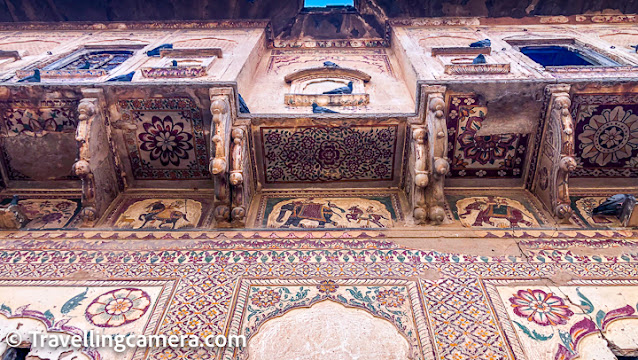


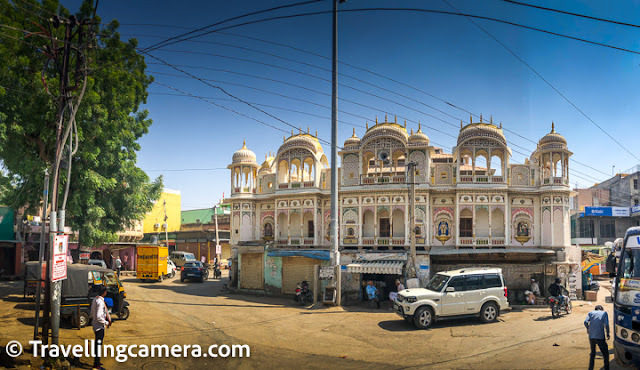
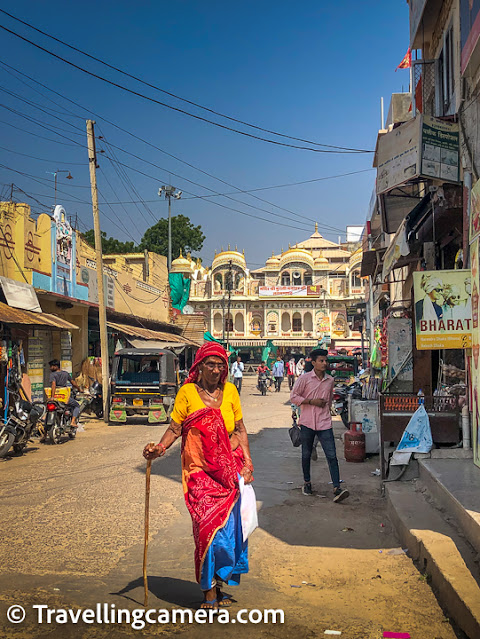
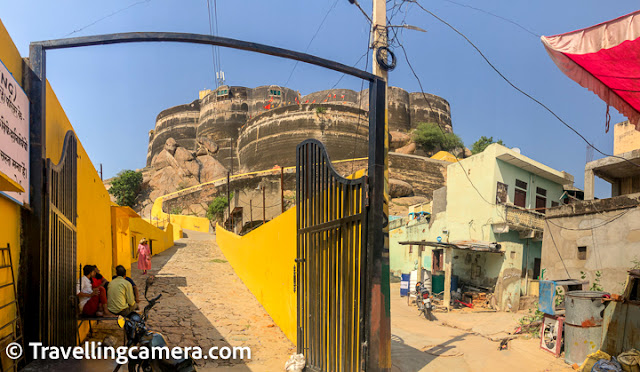



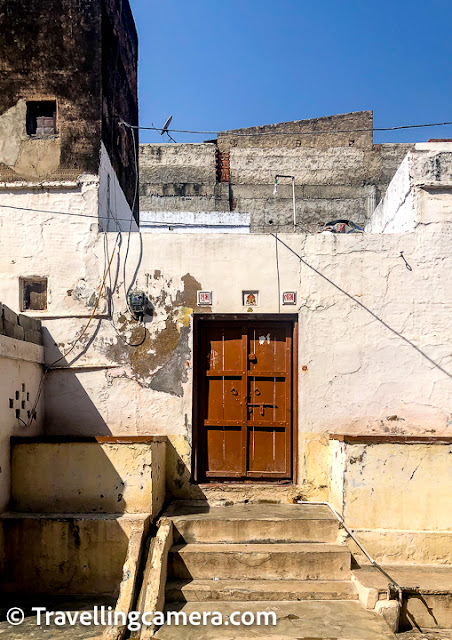




.jpg)
Comments